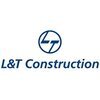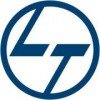Filter interviews by
Jay Gauri Projects India Safety Officer Interview Questions and Answers
Jay Gauri Projects India Safety Officer Interview Experiences
1 interview found
I applied via Company Website and was interviewed in Mar 2023. There were 2 interview rounds.

(3 Questions)
- Q1. Where is use of msds
- Ans.
MSDS is used to provide information about hazardous chemicals and their safe handling.
MSDS stands for Material Safety Data Sheet
It contains information about the physical and chemical properties of a substance
It also includes information about potential hazards, safe handling procedures, and emergency response measures
MSDS is required by law for all hazardous chemicals used in the workplace
It is important for safety of...
- Q2. How many type of injury
- Ans.
There are various types of injuries that can occur.
There are two main types of injuries: acute and chronic.
Acute injuries occur suddenly and include things like fractures, sprains, and cuts.
Chronic injuries develop over time and are often caused by repetitive motions or overuse, such as tendinitis or carpal tunnel syndrome.
Injuries can also be classified by their severity, ranging from minor to severe or life-threateni...
- Q3. What is safety and how many type of hazard
- Ans.
Safety refers to the measures taken to prevent accidents and injuries in the workplace. There are several types of hazards that can pose a threat to safety.
Safety involves identifying and assessing potential hazards in the workplace
Types of hazards include physical, chemical, biological, ergonomic, and psychosocial hazards
Examples of hazards include slips, trips, and falls, exposure to harmful chemicals, repetitive str...
Interview Preparation Tips
Top trending discussions






Interview questions from similar companies

(4 Questions)
- Q1. What about safety
- Q2. How to reduce hazards
- Q3. How devloped safety culture
- Q4. Without safety induction person do not allow towork
Interview Preparation Tips

I applied via Approached by Company and was interviewed in Nov 2024. There were 2 interview rounds.
(3 Questions)
- Q1. What is safety and how does it relate to hazards?
- Ans.
Safety is the state of being free from harm or danger, while hazards are potential sources of harm or danger.
Safety refers to the measures taken to prevent accidents, injuries, or illnesses in the workplace or any environment.
Hazards are potential sources of harm or danger that can cause accidents, injuries, or illnesses.
Safety measures are implemented to identify, assess, and control hazards to minimize risks and ensu...
- Q2. What are the role and responsibilities of HSE officer
- Ans.
HSE officers are responsible for ensuring health, safety, and environmental regulations are followed in the workplace.
Developing and implementing health and safety policies
Conducting regular inspections and risk assessments
Training employees on safety procedures
Investigating accidents and incidents
Ensuring compliance with local, state, and federal regulations
- Q3. What do you mean by Hira
- Ans.
HIRA stands for Hazard Identification and Risk Assessment. It is a systematic process for identifying potential hazards and evaluating the associated risks.
HIRA involves identifying hazards in the workplace or environment.
It includes assessing the risks associated with each hazard.
The goal of HIRA is to implement control measures to mitigate or eliminate the identified risks.
Examples of hazards include chemical exposur
(1 Question)
- Q1. What is the definition of safety and how does it relate to hazards?
- Ans.
Safety is the state of being free from harm or danger, while hazards are potential sources of harm or danger.
Safety refers to the condition of being protected from harm or danger
Hazards are potential sources of harm or danger that can cause accidents or injuries
Safety measures are put in place to mitigate or eliminate hazards
Examples of hazards include slippery floors, exposed electrical wires, and toxic chemicals
Interview Preparation Tips

Safety Officer Interview Questions & Answers
Megha Engineering & Infrastructuresposted on 25 Jun 2024
(2 Questions)
- Q1. What is HIRA and how to prepare it
- Ans.
HIRA stands for Hazard Identification and Risk Assessment. It is a systematic process to identify potential hazards and assess the associated risks.
Identify all potential hazards in the workplace or task
Assess the likelihood and severity of each hazard
Determine the level of risk for each hazard
Implement control measures to mitigate or eliminate the risks
Regularly review and update the HIRA as needed
- Q2. What is JSA and its purposes
- Ans.
JSA stands for Job Safety Analysis. It is a process used to identify and control hazards in the workplace.
JSA involves breaking down a job into its individual tasks and identifying potential hazards associated with each task.
The purpose of JSA is to prevent accidents and injuries by proactively addressing safety risks.
JSA helps in developing safe work procedures and training employees on how to perform tasks safely.
Exa...
HIRA , JSA, MSDS , PTW
Interview Preparation Tips

I applied via Walk-in and was interviewed in May 2024. There was 1 interview round.
(5 Questions)
- Q1. What is responsibility safety officer
- Ans.
Safety officers are responsible for ensuring the safety of employees, visitors, and the workplace environment.
Developing and implementing safety policies and procedures
Conducting regular safety inspections and audits
Providing safety training to employees
Investigating accidents and incidents to determine causes and prevent future occurrences
Ensuring compliance with safety regulations and standards
- Q2. How many types of fire extinguisher
- Ans.
There are five main types of fire extinguishers: water, foam, dry powder, CO2, and wet chemical.
Water fire extinguishers are suitable for Class A fires involving solid materials like wood or paper.
Foam fire extinguishers are effective for Class A and B fires involving flammable liquids like petrol or oil.
Dry powder fire extinguishers are suitable for Class A, B, and C fires involving flammable gases.
CO2 fire extinguish...
- Q3. How many types of permit
- Ans.
There are various types of permits required for different activities in a workplace.
Work Permit - for tasks like hot work, confined space entry, etc.
Electrical Permit - for electrical work like installations, repairs, etc.
Excavation Permit - for digging or excavation work.
Permit to Work at Height - for tasks performed at elevated locations.
Permit to Work with Hazardous Materials - for handling dangerous substances.
Perm...
- Q4. How many types hazard control methods
- Ans.
There are three main types of hazard control methods: engineering controls, administrative controls, and personal protective equipment (PPE).
Engineering controls involve physically changing the workplace to reduce or eliminate hazards, such as installing machine guards or ventilation systems.
Administrative controls focus on changing work practices or policies to minimize exposure to hazards, such as implementing safety...
- Q5. Why important PPE work at site work place
Interview Preparation Tips

I applied via Approached by Company and was interviewed in Jan 2024. There was 1 interview round.
(5 Questions)
- Q1. Weekly walk down related
- Q2. Electrical Installation
- Q3. Documents verification
- Q4. Welfare workman's
- Q5. Environment Management

(2 Questions)
- Q1. What is safe work producer
- Q2. What is safety
Interview Preparation Tips

Safety Officer Interview Questions & Answers
Nagarjuna Construction Companyposted on 1 Jul 2024
(1 Question)
- Q1. Experience of previous organisations
Interview Preparation Tips

Safety Officer Interview Questions & Answers
Larsen & Toubro Limitedposted on 26 Sep 2024
(1 Question)
- Q1. Environment health safety

I applied via Recruitment Consulltant and was interviewed in May 2023. There were 3 interview rounds.

(4 Questions)
- Q1. What is risk ,hazard and near miss?
- Ans.
Risk is the likelihood of a harmful event happening, hazard is a potential source of harm, and a near miss is a close call that could have resulted in harm.
Risk is the chance of a harmful event occurring, such as an accident or injury
Hazard is a potential source of harm, such as a slippery floor or faulty equipment
Near miss is a close call where an incident almost occurred but was avoided
Identifying and addressing risk...
- Q2. About BOCW Act. about critical lifting
- Q3. Type of fire extinguisher and it use
- Ans.
Different types of fire extinguishers include water, foam, CO2, dry powder, and wet chemical, each designed for specific types of fires.
Water extinguishers are suitable for Class A fires involving solid materials like wood or paper.
Foam extinguishers are effective on Class A and B fires, which involve flammable liquids like petrol or oil.
CO2 extinguishers are used for electrical fires (Class C) and flammable liquids (C...
- Q4. How many of fall arrestor
- Ans.
The number of fall arrestors required depends on the specific work environment and tasks being performed.
Number of fall arrestors needed is determined by the number of workers at height simultaneously
Consider the length of the fall arrestor lanyard and the distance to the nearest anchor point
Ensure that each worker has their own fall arrestor for individual protection
(1 Question)
- Q1. About payment and facility of next company
Jay Gauri Projects India Interview FAQs
Tell us how to improve this page.
Jay Gauri Projects India Safety Officer Interview Process
based on 1 interview
Interview experience
Safety Officer Interview Questions from Similar Companies
|
Project Manager
7
salaries
| ₹5.4 L/yr - ₹9 L/yr |
|
Electrical Engineer
7
salaries
| ₹2.4 L/yr - ₹4.2 L/yr |
|
Site Incharge
7
salaries
| ₹2.5 L/yr - ₹5.2 L/yr |
|
Instrument Engineer
6
salaries
| ₹3.2 L/yr - ₹3.4 L/yr |
|
Mechanical Technician
5
salaries
| ₹2.4 L/yr - ₹3.6 L/yr |

Larsen & Toubro Limited

Tata Projects

Hindustan Construction Company

Shapoorji Pallonji Group
- Home >
- Interviews >
- Jay Gauri Projects India Interview Questions >
- Jay Gauri Projects India Safety Officer Interview Questions







